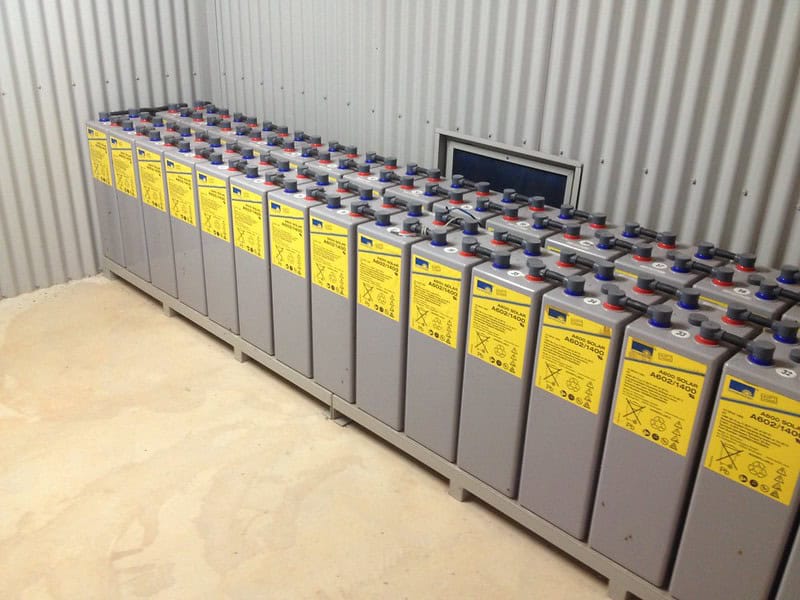Correctly sizing a solar battery system is crucial for ensuring your system provides you with enough energy when you need it. This might be at night for an offgrid system or during a blackout or loadshedding.
Improperly sized systems can lead to inefficiencies, unreliable backup power and frequently damage the batteries as consumers try to get more than the system can provide.
In this article, we’ll explain how to properly size a solar battery system for home use, covering key components, important factors, and practical steps to get the most out of your investment.
Key Factors to Consider in Sizing Your Solar Battery System
Energy Consumption
The first and most important factor in sizing your solar battery system is your energy consumption. This includes calculating how much electricity your household or business uses daily. To do this:
- Check your electricity bill for kilowatt-hour (kWh) usage.
- Check your meter if you are using prepaid electricity
- Use an energy monitoring device to track real-time energy consumption.
A typical Zimbabwean household uses around 10–15 kWh per day, but this can vary based on the number of appliances and usage habits. Borehole pumps, air conditioning systems or just having a larger home will drive your consumption into a higher range and influence system size.
Type of Solar Battery
The two main types of solar batteries commonly used in Zimbabwe are lithium-ion and lead-acid batteries.
Lithium-ion batteries are known for their higher efficiency, longer lifespan, and ability to be discharged to a deeper level. While they’re more expensive upfront they provide more energy due to their deeper depth-of-discharge.

Depth-of-discharge (DoD) is how much energy from the battery you can use without damaging the battery. The DoD for lithium is 80%.
Lead-acid batteries are cheaper but they have a shorter lifespan, lower energy efficiency and have a shallow depth of discharge. They’re also bulkier and require more maintenance. The DoD for lead-acid batteries is 50%.
Your choice of battery type will significantly impact the overall size of your solar battery system. Although they’re more expensive, lithium-ion batteries are the better option especially for offgrid systems due to their DoD.
Desired Backup Time
How long you want your solar battery to provide power during outages or cloudy days will also determine its size. In Zimbabwe, frequent power cuts mean you’ll want a battery that can offer extended backup times.
If your goal is to have a reliable power source for up to 24 hours, you’ll need a battery system with sufficient capacity to cover your average daily energy consumption.
Steps to Properly Size Your Solar Battery System
Step 1: Assess Energy Needs
To calculate your energy needs, list the essential appliances you want to run during an outage, such as refrigerators, lights, and electronics.
Add up their wattage and estimate how long they run each day. Multiply this by the number of hours you need backup power, and you’ll have a good starting point for your battery capacity.
For example, if your essential devices require 3 kWh of electricity over 8 hours, you’ll need at least a 3 kWh battery for that period.
Step 2: Evaluate Solar Panel Output
Review the output of your solar panels based on their wattage and sunlight exposure. Zimbabwe is blessed with abundant sunlight and a well-placed solar panel typically generates around 5 kWh per day for every kilowatt of solar capacity.
If your panels produce more energy than your household uses, you can store that excess in the battery for later use.
Step 3: Determine Battery Capacity
To determine the appropriate battery capacity, match it with your energy needs and solar panel output. A simple formula to calculate the required capacity is:
Battery Capacity (kWh) = Battery Depth of Discharge÷Daily Energy Consumption (kWh)
For example, if your daily energy consumption is 10 kWh and you’re using a lithium-ion battery with a depth of discharge (DoD) of 80%, you’ll need around 12.5 kWh of battery storage (10 kWh ÷ 0.8).
Step 4: Consider System Efficiency and Losses
Energy losses occur during energy conversion and storage, typically between 10–20%. When calculating your solar battery size, account for these efficiency losses by adding an extra 10–20% to the total capacity.
Step 5: Select the Appropriate Battery Type
Choose a battery type that suits your needs and budget. For Zimbabwean households that need reliable, long-term storage, lithium-ion batteries are the best choice, despite their higher upfront costs.
However, if your budget is more limited, lead-acid batteries may provide a more affordable solution, though they’ll need more maintenance and storage space.
Properly sizing your solar battery system is essential to maximizing your investment in solar energy. By calculating your energy needs, assessing your solar panel output, and selecting the right battery type, you can ensure that your system provides reliable power during outages and low sunlight periods.
If you already have solar panels and you are looking to add batteries to your system contact us on our Facebook page or on our Whatsapp for a free consultation. Check out our free solar system size calculator and get an estimate on a complete solar system in less than five minutes.